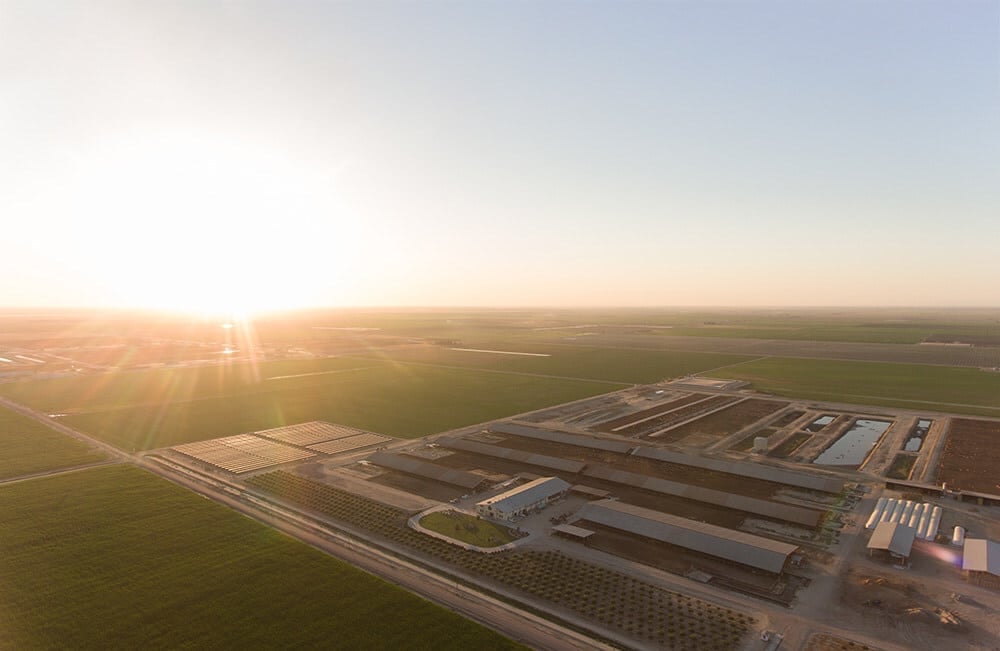Key Takeaways
- Dairy Cares and California’s dairy sector report a collective annual reduction of 5 million metric tons CO₂e in methane emissions.
- The reduction is attributed to manure management technologies, including digesters and alternative practices, and milk production efficiency improvements.
- The state’s dairy farms are over two-thirds of the way toward meeting California’s statutory goal of a 40% methane reduction from 2013 levels by 2030 (SB 1383).
- Methane capture projects are producing renewable energy, contributing to broader climate and energy goals.
- Funding for methane reduction has come from a combination of state programs and private investment.
Dairy Cares and California Dairy Sector Report Methane Reduction Progress
Dairy Cares, a coalition representing California’s dairy cooperatives and allied organizations, announced that dairy farms across the state are now reducing a combined 5 million metric tons of methane emissions (CO₂e) annually. This figure represents progress toward California’s goal of reducing livestock methane emissions by 40% below 2013 levels by 2030, as established by Senate Bill 1383 in 2016.
California is currently the only jurisdiction with a legislated target of this kind. Methane is recognized for its short atmospheric lifespan and strong warming potential, making its reduction a near-term climate mitigation strategy.
Multiple Approaches Contribute to Emission Reductions in California Dairy Farms
According to Dairy Cares, reductions are being achieved through a combination of strategies:
Methane Capture
- 168 dairy digesters are operational, with 75 additional projects in development.
- Digesters capture methane from manure and convert it into renewable natural gas, electricity, or hydrogen.
- Estimated reductions from digesters: 2.53 million MTCO₂e annually.
Methane Avoidance
- 128 alternative manure management projects are active, with 65 more under development.
- Practices include manure separation, composting, and mechanical scrape systems to prevent methane formation.
- Estimated reductions: 254,000 MTCO₂e annually.
Milk Production Efficiency
- Herd sizes have declined while maintaining stable milk output, aided by improvements in breeding, animal nutrition, and care.
- Estimated reductions: 2.13 million MTCO₂e annually.
Public Programs and Private Investment To Support California Dairy Farms
Methane reduction initiatives in California are supported by the Dairy Digester Research and Development Program (DDRDP) and the Alternative Manure Management Program (AMMP), both administered by the California Department of Food and Agriculture (CDFA).
- Since 2015, $356 million in public grants have been awarded.
- Projects require or encourage private co-investment. The DDRDP alone has attracted over $522 million in private capital.
- According to state data, the DDRDP accounts for 20% of all greenhouse gas reductions from California’s climate programs, while receiving approximately 1.5% of total funding.
Additional Impacts and Ongoing Needs
In addition to methane reduction, these projects have resulted in the production of renewable energy and potential benefits for air and water quality, particularly in the San Joaquin Valley.
- Digesters currently generate enough energy to fuel over 17,000 vehicles per day, including transit buses and electric vehicles.
- Over 175 solar energy systems are also in use on California dairy farms.
While California’s dairy sector has made progress toward the 2030 target, state officials and industry stakeholders have indicated that further funding is required to reach the full 40% reduction. Both the DDRDP and AMMP are reported to be oversubscribed.


